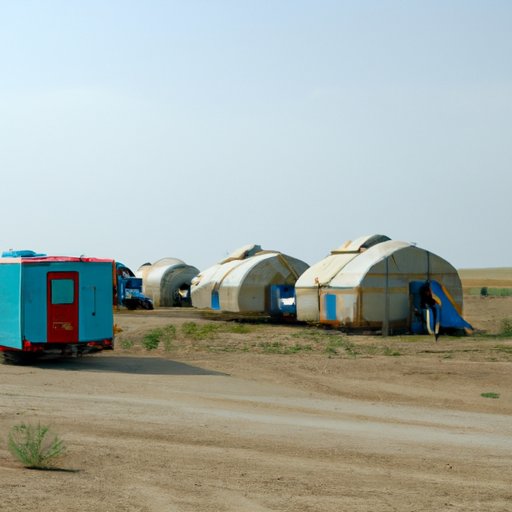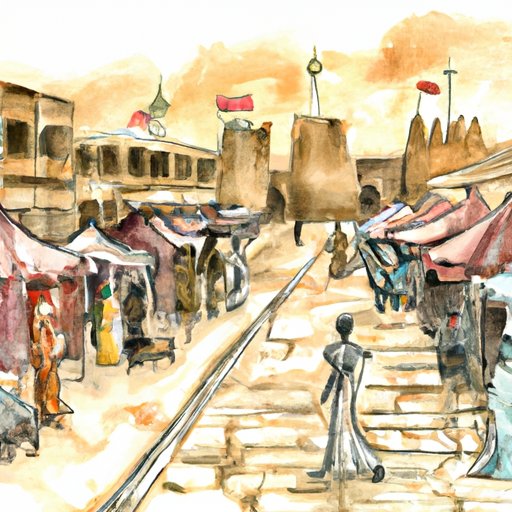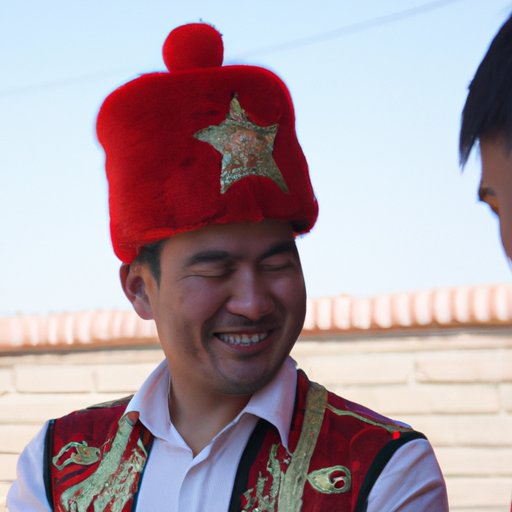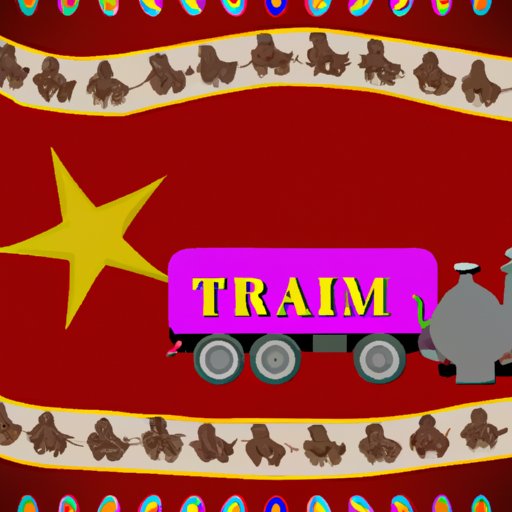Introduction
The Silk Road was a network of trade routes that connected Europe, Central Asia, and China from 206 BC to 1453 AD. It was an important part of history as it enabled the exchange of goods, ideas, and cultures between these regions. This article explores how people traveled on the Silk Road, including the types of transportation used, the role of caravans in travel, trade and commerce, cultural exchange, security measures, and its lasting legacy.
Types of Transportation Used on the Silk Road
The Silk Road was primarily traversed by land, but there were also extensive waterways that provided access to various parts of the route. Different types of transportation were used for different purposes, depending on the terrain, climate, and availability of resources.
Caravans
Caravans were the most popular form of transportation on the Silk Road. These large groups of merchants, traders, and travelers often had hundreds of camels and horses carrying goods and supplies. The caravans were organized into well-regulated units with a leader who was responsible for the safety of the group.
Horses and Camels
Horses and camels were the primary mode of transport for caravans. Horses could reach speeds of up to 25 miles per hour and were used to cover longer distances. Camels, on the other hand, could carry more weight and were better suited for traversing deserts and mountains. They could cover up to 20 miles per day and could go without food or water for long periods of time.
Boats
Boats were used for shorter trips along rivers and canals. They were usually small wooden vessels powered by oars or sails. Boats were an important mode of transport for goods and people, as they allowed for faster and safer travel than overland routes.

The Role of Caravans in Travel on the Silk Road
Caravans played an essential role in travel on the Silk Road. They provided protection against bandits and wild animals, as well as shelter and supplies for travelers. Caravans also served as centers of commerce and culture, as they brought together people from different backgrounds and facilitated the exchange of goods and ideas.
Organization of Caravans
Caravans were typically organized into small units of 10 to 30 people, each led by a captain or caravan master. The caravan master was responsible for the safety and security of the group, as well as the distribution of supplies and payment of fees to local rulers. The members of the caravan would take turns riding horses or camels and walking, depending on the terrain.
Routes Taken by Caravans
Caravans traveled along established routes, following paths that had been used for centuries. These routes were chosen for their relative safety, as they avoided dangerous terrain and hostile areas. Caravans would often follow river valleys and mountain passes, taking advantage of natural resources such as water and grazing land for their animals.
Benefits of Caravans for Travelers
Traveling in caravans offered many benefits for travelers. Caravans provided protection against bandits and wild animals, as well as shelter and supplies for travelers. They also enabled people to traverse vast distances quickly and safely, as well as providing a platform for the exchange of goods and ideas.

Trade and Commerce Along the Silk Road
Trade and commerce played an important role in the success of the Silk Road. Goods such as silk, spices, tea, cotton, and porcelain were exchanged between East and West, and markets and trading centers flourished along the route.
Goods Exchanged
Goods exchanged along the Silk Road varied depending on the region. In the east, silk, spices, tea, and porcelain were popular, while in the west, wool, salt, and gold were in demand. Many luxury items, such as jewelry and art, were also traded along the route.
Markets and Trading Centers
Markets and trading centers were set up along the Silk Road to facilitate the exchange of goods. These markets were bustling hubs of activity, where merchants and traders from all over the world gathered to buy and sell goods. They were also centers of culture and learning, as travelers exchanged stories and shared information.
Impact of Trade Along the Silk Road
The Silk Road had a profound impact on the economies of the regions it connected. By facilitating the exchange of goods, it allowed for the development of new industries and markets. It also helped spread technology, knowledge, and ideas between East and West, leading to advances in science, medicine, and philosophy.

Cultural Exchange Along the Silk Road
The Silk Road was not only a conduit for trade and commerce, but also a platform for the exchange of cultures and ideas. Religion, language, art, and music were all shared among the diverse cultures that dotted the route.
Religion
Religion was an important part of life along the Silk Road. Buddhism, Christianity, and Islam were all practiced in different parts of the route, and religious pilgrims often traveled along the Silk Road to visit holy sites. These pilgrimages served as a means of exchanging religious knowledge and beliefs.
Language
Languages were shared and exchanged along the Silk Road. Persian, Chinese, and Arabic were widely spoken, and traders and travelers developed a common language known as “Chagatai”, which incorporated elements from all three languages. This shared language enabled communication and understanding between different cultures.
Art and Music
Art and music were also exchanged along the Silk Road. Paintings, sculptures, and musical instruments were all traded, allowing for the sharing of artistic traditions between cultures. These exchanges enriched the arts of both East and West, leading to the development of new styles and techniques.
Security and Safety Measures Taken on the Silk Road
Traveling along the Silk Road was not without its dangers. Bandits, wild animals, and harsh weather posed a threat to travelers, and security measures had to be taken to ensure their safety.
Mercenary Groups
Mercenary groups were hired by merchants and traders to protect their caravans. These groups, often made up of former soldiers, were armed with swords and bows and arrows and were tasked with defending the caravan from attackers. They were also responsible for scouting the route and identifying potential threats.
Escort Services
Escort services were also available for those traveling on the Silk Road. These services provided experienced guides who knew the route and could help travelers navigate difficult terrain and avoid dangerous areas. They also provided protection in case of attack.
Outposts
Outposts were set up along the Silk Road to provide shelter and supplies for travelers. These outposts were staffed by government officials and soldiers, who were tasked with protecting travelers from bandits and wild animals. Outposts also served as centers of commerce, allowing traders and travelers to exchange goods and information.
Legacy of the Silk Road
The Silk Road left a lasting legacy on the regions it connected. It had a profound economic influence, as it facilitated the exchange of goods and ideas between East and West. It also had a significant cultural impact, as it allowed for the sharing of religions, languages, and art. Finally, it had a historical significance, as it provided a bridge between civilizations and laid the foundation for modern globalization.
Conclusion
The Silk Road was an important part of history, as it enabled the exchange of goods, ideas, and cultures between Europe, Central Asia, and China. Different types of transportation were used for different purposes, and caravans were the most popular form of transport. Trade and commerce flourished along the route, and cultural exchange was facilitated through the sharing of religions, languages, and art. Security measures were taken to ensure the safety of travelers, and the legacy of the Silk Road still resonates today.
(Note: Is this article not meeting your expectations? Do you have knowledge or insights to share? Unlock new opportunities and expand your reach by joining our authors team. Click Registration to join us and share your expertise with our readers.)
